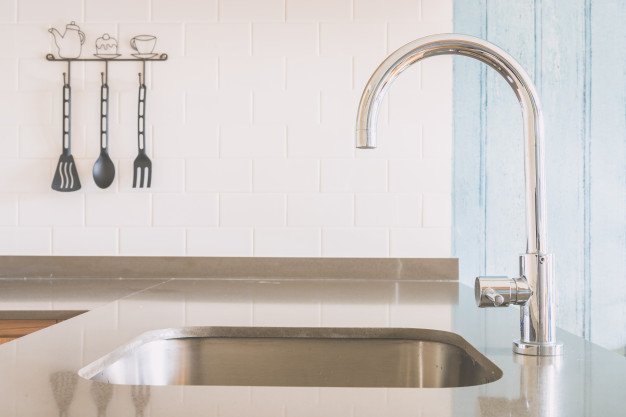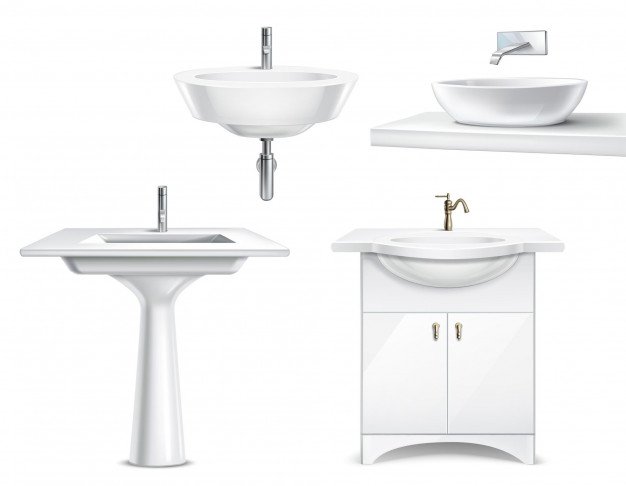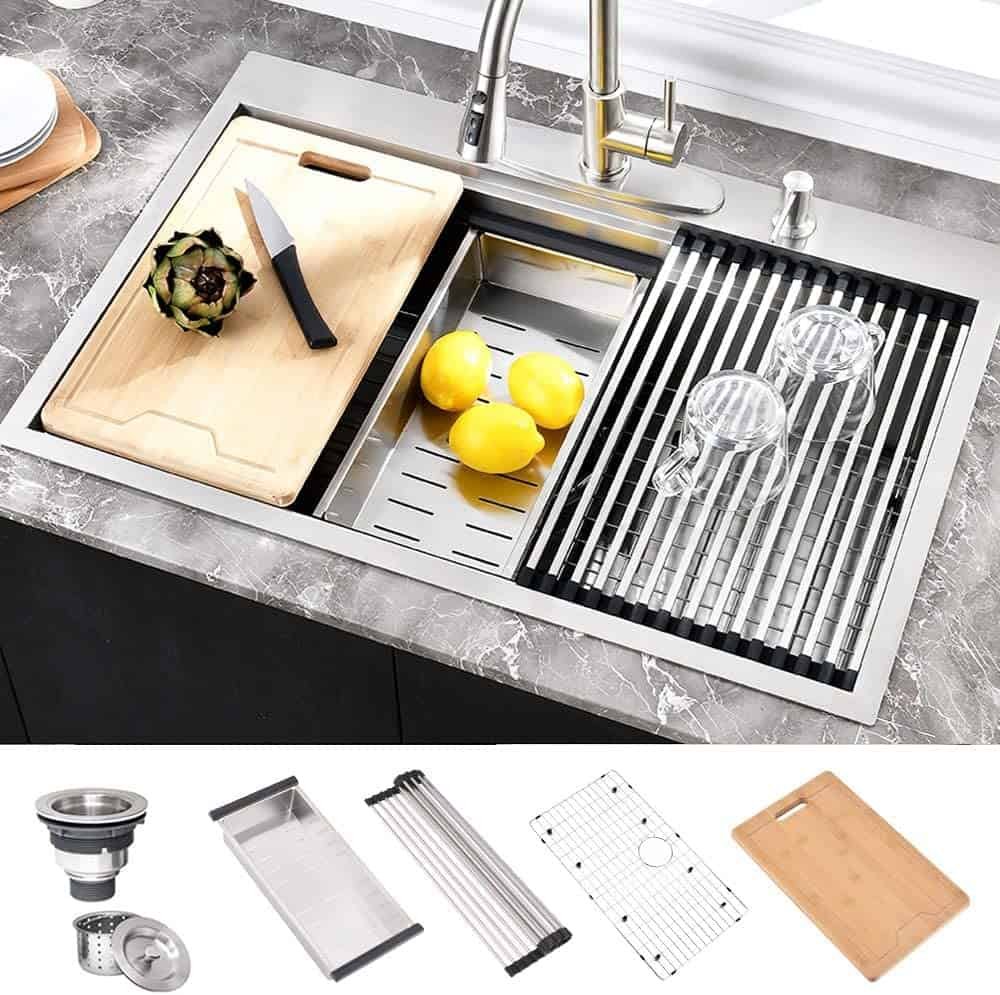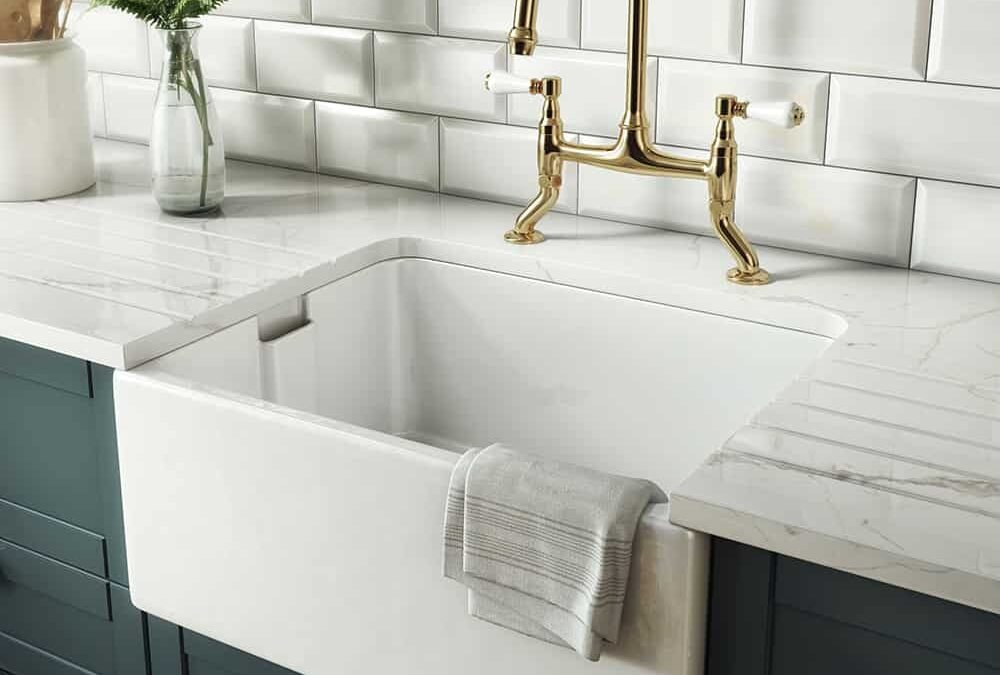Water is a vital datum for survival, and what enabled humanity to grow is this ability to conserve water and carry it at will. Thus, cities have developed around water points, and great civilizations have implemented innovations to make access to water easy and practical for everyone. From here, the existence of Belfast Sinks came to stay.
Wells and fountains have multiplied, pipes and sewerage have flourished since Antiquity, but houses were only very rarely directly connected to the network. It was still necessary to fetch water in buckets that we then poured into tubs or dug stones with a simple evacuation channel.
Until the end of the 18th century, the first sinks as we know them today will appear, thanks to both the use of white ceramic or porcelain, which begins to be produced industrially, and pipes’ progress, which gradually bring water to the feet of homes. One of the first sinks to emerge then is the one from Belfast.
Belfast in the 18th century
From the maritime trade, the city of Belfast will develop, then from its shipyards and all the industry of the time. The city grows exponentially, and its wealth makes it possible to make a modern and well-equipped city.
If history has not retained the name of the inventor of the Belfast sinks, we know that it was the agents in charge of water for the city who asked that the sink be deep enough for it. Bathe a baby; the overflow must avoid accidents and especially better drainage.
Conversely, in London, where water is more challenging to convey, the sinks will be more comprehensive but shallower and overflow to avoid a mess.
The “Belfast Sinks” and their advantages
These English sinks, called Belfast sinks, designates their original destination, namely, the pantry. However, they instead appeared in country houses, very quickly outclassing the traditional wooden or stone sinks.
It must be said that they represent a clear superiority over their competitors of the time.
The first advantage of Belfast sinks is their material. By adopting white porcelain, sinks become cleaner and easier to maintain. Above all, ceramic being perfectly smooth, it does not retain impurities or bacteria and therefore is much more hygienic.
The second is standardization. By fixing their sinks’ dimensions very early, the English quickly manufactured them in the assembly line and distributed them at a lower cost, which allowed their democratization.
The third, in the case of Belfast sinks, is the famous overflow. Not only does this improve safety, but by avoiding the phenomenon of vacuum, it can be emptied more quickly.
The fourth is that they are heat resistant. Unlike the wooden ones, you can replace them as they offer more durability and longevity.
Finally, we must admit that they have class!
They are not completely built-in; their front face is generally left visible. They are thus becoming a piece of kitchen decoration more and more popular with interior designers and decorators.
Now, What Type of Belfast Sinks are the Best?
Your sink is, along with your bed and shower, one of the things you’ll use the most in your home. But how much time do you spend choosing the latter? Your first instinct will surely be to choose a sink for its aesthetics to go well with the entire kitchen.
However, regardless of the budget involved, no one wants to invest multiple times in this one sink in the span of a few years. Therefore, a criterion should not overlook the sink’s life, its ability to withstand shocks, consecutive cleaning, and remain in perfect condition.
A good quality sink lasts on average 10 to 15 years. We advise you to consider this criterion before deciding on the price, the design, etc.
Stainless Steel Belfast Sinks

Undoubtedly the most popular type of sink and comes to mind first when thinking of sinks. It is the most common and most commercialized material. Its strengths are its durability and adaptability to different styles of cooking.
Stainless steel sinks are inexpensive to produce and therefore inexpensive (9 out of 10 times a stainless steel sink will be less expensive than a comparable sink in another material). Another reason why stainless steel sinks are so successful is that they match the most faucets and kitchen appliances.
Equipped with a hollow bowl, they are less noisy for washing dishes than their counterparts in heavier materials. Stainless steel cleaner helps prevent this kind of problem.
Ceramic Belfast Sinks

Historically, ceramic Belfast sinks were the first to see the light of day, long before the Industrial Revolution brought steel into every home. Today, they are still trendy. Thanks to their vintage character for people who can spend up to € 500 on a sink purchase.
From a design point of view, the white of ceramic sinks contrasts perfectly with most kitchens with a wooden theme. Their smooth finish is both aesthetic and very practical to clean (a damp cloth will suffice in most cases!).
The thickness of ceramic sinks makes their installation easy. For example, “Belfast” ceramic sinks sit on your worktop and reveal the entire front. However, ceramic sinks have a reputation for not suitable for dishes given the material’s hardness. They are also fragile and prone to surface chipping.
When choosing a ceramic sink, it is essential to consider that people choose this material due to its aesthetic appearance. So, give a little care and attention to keep your ceramic sink in pristine condition.
Composite Material Belfast Sinks

If you seek a modern, durable, and elegant product simultaneously, the best-priced solution is certainly granite composite sinks. Usually made of 80% granite, the material quality reflects its price and makes it the most expensive sink. Its solid surface makes it impervious to wear and tear daily.
A composite sink’s longevity is significantly higher than other materials. It can easily reach 15-20 years if accompanied by proper maintenance. In most cases, it will be the only sink you have to buy for your kitchen! Belfast Sinks made of composite materials are, in theory, utterly resistant to shattering and heat.
Final Words
In conclusion, Belfast Sinks are practical and decorative. Apart, the Belfast sink had not lost any of its charms in the 300 years or so when it first appeared.
It will also blend perfectly with all types of kitchen and all worktops, bringing an original touch to your interior.

